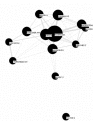The intellectual structure and substance of the knowledge utilization field: a longitudinal author co-citation analysis, 1945 to 2004
- PMID: 19014512
- PMCID: PMC2621243
- DOI: 10.1186/1748-5908-3-49
The intellectual structure and substance of the knowledge utilization field: a longitudinal author co-citation analysis, 1945 to 2004
Abstract
Background: It has been argued that science and society are in the midst of a far-reaching renegotiation of the social contract between science and society, with society becoming a far more active partner in the creation of knowledge. On the one hand, new forms of knowledge production are emerging, and on the other, both science and society are experiencing a rapid acceleration in new forms of knowledge utilization. Concomitantly since the Second World War, the science underpinning the knowledge utilization field has had exponential growth. Few in-depth examinations of this field exist, and no comprehensive analyses have used bibliometric methods.
Methods: Using bibliometric analysis, specifically first author co-citation analysis, our group undertook a domain analysis of the knowledge utilization field, tracing its historical development between 1945 and 2004. Our purposes were to map the historical development of knowledge utilization as a field, and to identify the changing intellectual structure of its scientific domains. We analyzed more than 5,000 articles using citation data drawn from the Web of Science. Search terms were combinations of knowledge, research, evidence, guidelines, ideas, science, innovation, technology, information theory and use, utilization, and uptake.
Results: We provide an overview of the intellectual structure and how it changed over six decades. The field does not become large enough to represent with a co-citation map until the mid-1960s. Our findings demonstrate vigorous growth from the mid-1960s through 2004, as well as the emergence of specialized domains reflecting distinct collectives of intellectual activity and thought. Until the mid-1980s, the major domains were focused on innovation diffusion, technology transfer, and knowledge utilization. Beginning slowly in the mid-1980s and then growing rapidly, a fourth scientific domain, evidence-based medicine, emerged. The field is dominated in all decades by one individual, Everett Rogers, and by one paradigm, innovation diffusion.
Conclusion: We conclude that the received view that social science disciplines are in a state where no accepted set of principles or theories guide research (i.e., that they are pre-paradigmatic) could not be supported for this field. Second, we document the emergence of a new domain within the knowledge utilization field, evidence-based medicine. Third, we conclude that Everett Rogers was the dominant figure in the field and, until the emergence of evidence-based medicine, his representation of the general diffusion model was the dominant paradigm in the field.
Figures
References
-
- Nowotny H, Scott P, Gibbons M. Re-Thinking Science: Knowledge and the Public in an Age of Uncertainty. Cambridge, MA: Polity Press; 2001.
-
- Stehr N. Modern society as knowledge societies. In: Ritzer G, Smart B, editor. Handbook of Social Theory. Thousand Oaks: Sage; 2001. pp. 494–508.
-
- Stehr N. Knowledge Societies. Thousand Oaks: Sage; 1994.
-
- Stehr N. A world made of knowledge. Society. 2001;39:89–92. doi: 10.1007/BF02712625. - DOI
LinkOut - more resources
Full Text Sources





